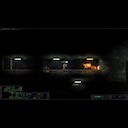Cài đặt Steam
Đăng nhập
|
Ngôn ngữ
简体中文 (Hán giản thể)
繁體中文 (Hán phồn thể)
日本語 (Nhật)
한국어 (Hàn Quốc)
ไทย (Thái)
Български (Bungari)
Čeština (CH Séc)
Dansk (Đan Mạch)
Deutsch (Đức)
English (Anh)
Español - España (Tây Ban Nha - TBN)
Español - Latinoamérica (Tây Ban Nha cho Mỹ Latin)
Ελληνικά (Hy Lạp)
Français (Pháp)
Italiano (Ý)
Bahasa Indonesia (tiếng Indonesia)
Magyar (Hungary)
Nederlands (Hà Lan)
Norsk (Na Uy)
Polski (Ba Lan)
Português (Tiếng Bồ Đào Nha - BĐN)
Português - Brasil (Bồ Đào Nha - Brazil)
Română (Rumani)
Русский (Nga)
Suomi (Phần Lan)
Svenska (Thụy Điển)
Türkçe (Thổ Nhĩ Kỳ)
Українська (Ukraine)
Báo cáo lỗi dịch thuật































Size ratio is a thing to differentiate species, u can guess most ants species' genus with small size with only Monomorium, larger size will be in other genuses. I brough this up because I think the spooders and big spooders aren't the same species if we consider the above theory is true, even the above is not true, the size ratio of the big spooder release compare to nope flies is way too big to ignore
Though, I suggest another theory on how the big spooder hunts, they will cruise around the cave, once detect a potential prey, they unleash their symbiotic partner, the Formido Minimum (Small fear or add Volans for small flying fear if u like them to), to slow their prey and let the big spooder have time to approach the prey and consume the unlucky creature, then the flies would preferably die after some periods of time and leave the prey for the big spooder to consume and create energy required to raise the new batch of flies inside its body